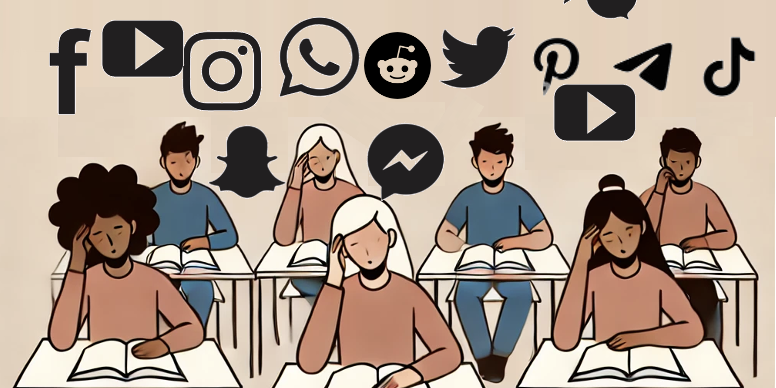Teaching Reading in a Distracted World

Why Aren’t Students Reading? A Look at the Data
If you’re struggling to get students to read the CourseKata stats textbook, you’re not alone! This challenge is echoed by instructors across all levels—high school and college—and in other disciplines as well. The data show a troubling decline in reading habits and skills:
- Over 30% of 13-year-olds report NEVER reading a book for fun (NAEP Student Experiences).
- Only 30% of 8th graders are "proficient" in reading, according to the most recent NAEP reading scores.
- Our attention spans are shrinking. At the turn of the century, people could stay focused on a screen for over 2.5 minutes; today, it’s just 47 seconds (Attention Span by Gloria Mark).
It’s not just about proficiency—reading requires sustained effort, which seems almost quaint and worthless in today’s fast-paced, digital-first world. One professor summed it up perfectly:
“There’s no testing skill that can be related to … Can you sit down and read Tolstoy?” The Atlantic
What’s the Bigger Context?
Let's zoom out to see what might be happening in the Data Generating Process. In Anxious Generation, Jonathan Haidt argues that declining reading habits reflect a shift in how we engage with the world, driven by the rise of a “phone-based” attention economy.
Here’s the issue: modern digital platforms—social media, apps, even news outlets—are designed to keep us hooked. Algorithms are finely tuned, based on data from every scroll, like, and click to capture and sell our attention. This relentless optimization for engagement has reshaped how we think, process information, and yes, how we read.
Reading requires focus and effort—two qualities increasingly at odds with our algorithm-driven lives. For students, the mental energy needed to read deeply can feel like swimming upstream against their everyday digital habits.
What Can We Do?
Despite these challenges, many CourseKata TIG (Teaching Improvement Group) teachers are finding ways to help students reclaim the skills of deep thinking and concentration. Together, we’re testing approaches to make reading achievable while supporting students who struggle.
One emerging strategy is a “dual-path” approach:
- Inclusive Class Activities: Create opportunities for all students to learn during class, even if they haven’t completed assigned readings. For example, we’ve developed a “read-in-class” Jupyter notebook in our Chapter 7 modulette prototype.
- Homework Reading: Assign reading as homework with credit big enough to change a students' grade if they do it but small enough so that they won't fail the class if they don't.
This approach aims to set a baseline for participation while encouraging and rewarding deeper engagement for those who read. The work is tough, but it’s a step toward helping students regain agency over their minds—and be able to learn hard things!—in a world designed to distract them.
A Final Thought
At CourseKata, we know we have to teach the students we have today. Our strategies are grounded in reality—acknowledging the challenges students face in a world designed to pull their focus in a thousand different directions.
But education is also about shaping the world we want to create. So here’s the question: Should we adapt education to fit this new reality, meeting students where they are? Or should we hold the line and continue teaching students to read deeply and think critically, even when it’s hard?
We’d love to hear your thoughts. How do you approach this tension in your own classroom? Let’s keep the conversation going—leave your musings and ideas in the comments below!
